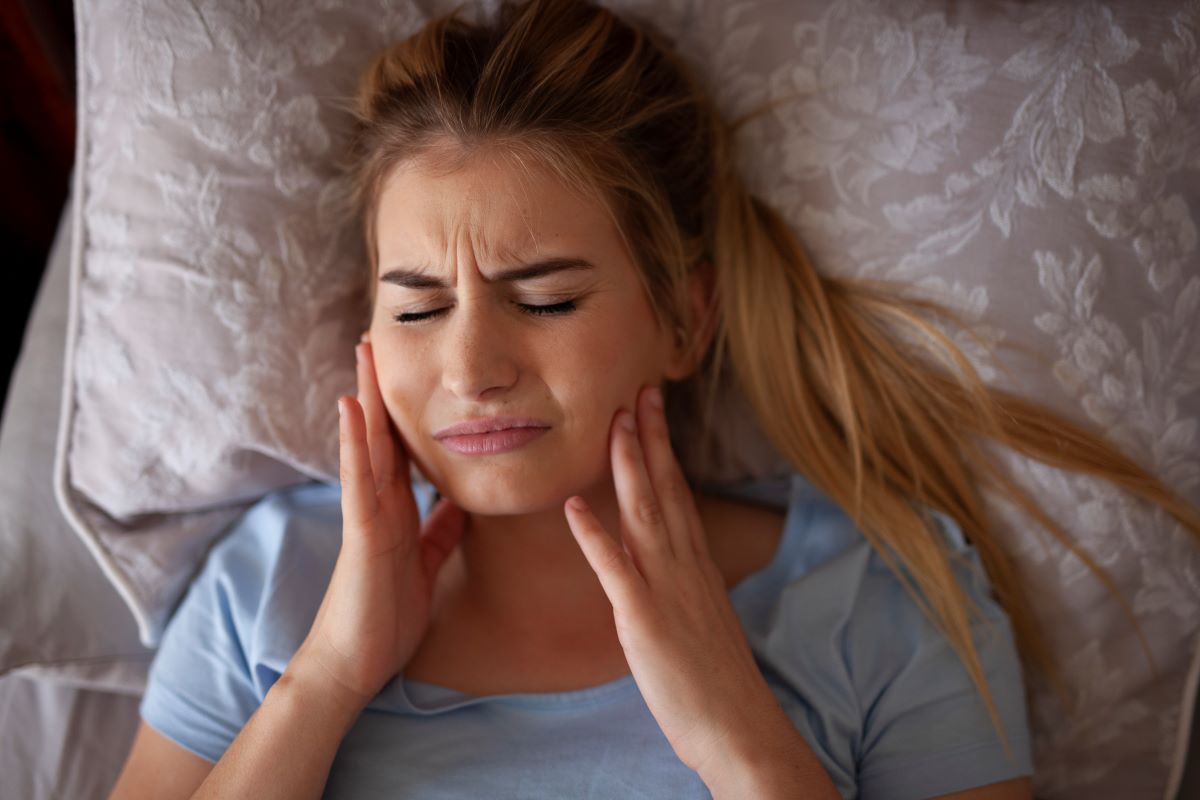Specialist Advice — 9 minutes
What is bruxism?
Bruxism, commonly referred to as “teeth grinding,” is an abnormal movement that disrupts the process of falling asleep and sleeping. It involves clenching the lower and upper teeth and moving them back and forth, causing pain in the jaws and gums, wearing down of the teeth, headaches and even damage to the temporomandibular joint. Although it can occur during the day, this involuntary grinding happens especially during sleep.

Bruxism is more common in young children, but it is thought to decrease with age. About 15% of children, 8% of adults and 3% of seniors are believed to grind their teeth a few times per week.[1]
Causes of bruxism
Bruxism occurs when the chewing muscles are activated by micro-arousals during sleep (brief awakenings of three to 15 seconds). The cause of micro-arousals can be varied, such as sleep apnea. Movements of the jaw have the function of attempting to restore airflow in the respiratory tract. There is also a family predisposition to bruxism, as 20 to 50% of subjects who know they grind their teeth have a parent who also grinds their teeth. Lack of sleep, anxiety, smoking, caffeine, chewing gum, as well as certain antidepressants and antipsychotics or recreational drugs, may increase the risk.
Symptoms
For many people, bruxism causes no pain and is often noticed by a sleeping partner who is awakened by the sound. Over time, however, its effects can take many forms:
- Worn, fractured, chipped or loose teeth
- Worn tooth enamel, exposing the tooth’s deeper layers
- Tooth pain or increased sensitivity
- Tired or tense jaw muscles, or a locked jaw that does not open or close completely
- Pain in the jaw, gums, neck or face
- Cracking or noise in the jaw joints
- Pain that feels like an earache
- Generalized headache starting in the temples
- Disturbed sleep
Diagnosis
Usually, it is the dentist who does the first examination, looking for the following signs:
- Abnormal wear of the teeth
- Pain or fatigue in the jaw muscles in the morning
- Enlarged jaw muscles
After that, the dentist may use intraoral devices to measure tooth wear or the intensity and duration of tooth contact. Also, electromyography (EMG) devices can record bruxism-related activity by capturing electrical signals from the masseter and temporal muscles, which are used for chewing.
If the person has symptoms of a sleep disorder in addition to bruxism, such as severe snoring, breathing problems or excessive daytime drowsiness, they should see a sleep specialist, who will recommend a polysomnography to establish a more precise diagnosis.
Treatment
There is no cure for bruxism, but treatments can relieve the symptoms and prevent the effects.
A person who grinds their teeth during the day is more likely to become aware of it and control this bad habit. However, nighttime bruxism requires other strategies because it is beyond the person’s control. Depending on the cause, these strategies may include:
- A cognitive-behavioural approach to control the problem and manage stress. Therapy, relaxation techniques, good sleep hygiene and even hypnosis can be beneficial.
- Oral devices to protect the teeth from damage caused by bruxism. An occlusal plate, which is a tray that covers the teeth to prevent them from coming into contact, is usually recommended, but a mandibular advancement device may be suggested if the bruxism is associated with a sleep-related breathing disorder.
- Medications such as anxiolytics (clonazepam) or clonidine are occasionally used in patients with severe bruxism that is resistant to other treatments. In all cases, it is best to avoid risk factors such as alcohol, tobacco, caffeine and drugs.
Pour du soutien professionnel, nous sommes là
We provide services that can help your doctor diagnose sleep disorders and determine the appropriate treatment.
You have questions about an equipment? Chat online with our respiratory therapist.
Sources1
- Ordre des dentistes du Québec. “Teeth grinding,” web page updated January 4, 2019, https://www.maboucheensante.com/en/article/teeth-grinding/.








